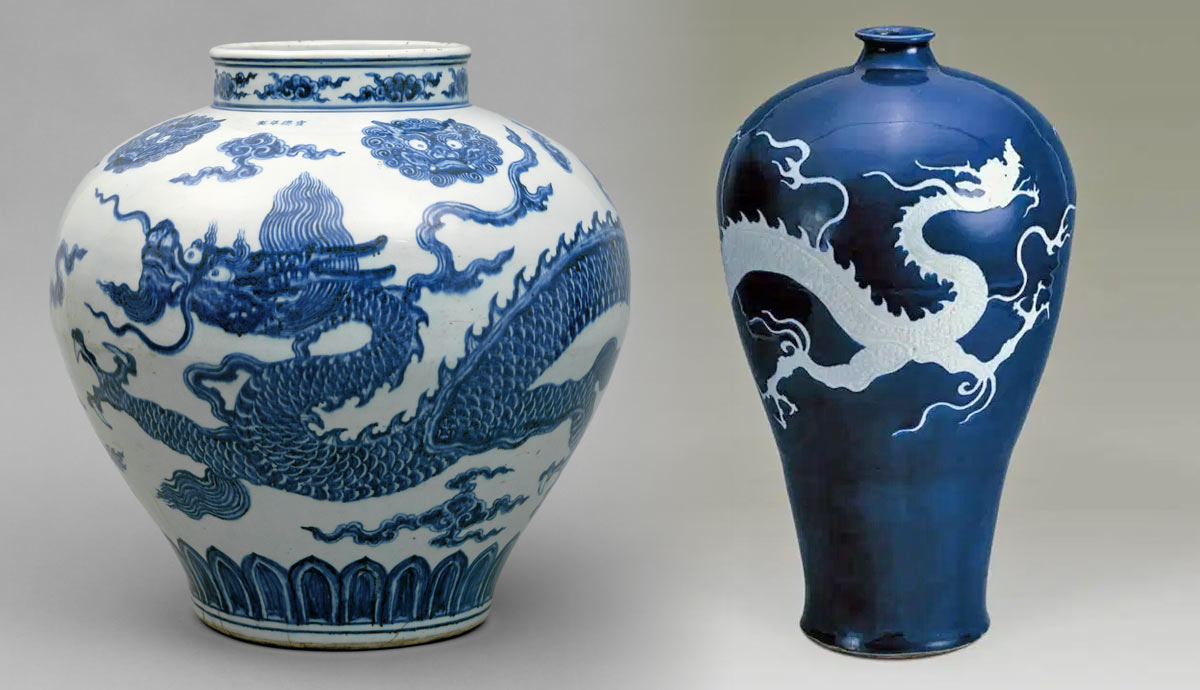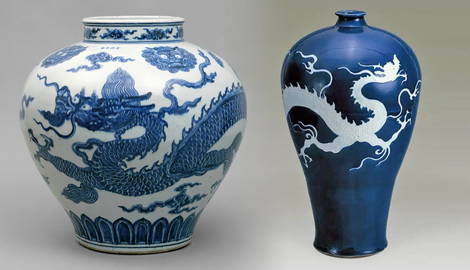
For over a thousand years, Chinese porcelain has been admired for its unique beauty. However, it has a deep history that transcends just utilitarian and decorative purposes. At one point in history, the white gold, as it was once called, symbolized power and an exotic taste. Its history can be traced from the ancient kilns of China. From there, it spread to other parts of the world as demand grew. In Europe, it was highly favored among the continent’s high-society.
A Brief History of Porcelain Creation in China

The history of porcelain begins with China’s skills in ceramics-making. The skills were developed more than 2,000 years ago, with the first rudimentary versions of porcelain emerging during the Han Dynasty. However, the actual porcelain, the kind that is glassy, and shines when held to the light, first appeared during the Tang Dynasty. Artisans created it using a mix of kaolin clay and petuntse rock. They then fired the mixture in kilns to above 1200 degrees Celsius. The process was used to create ceramic items that were durable, light, and impermeable.
The qualities made porcelain items to be both useful and beautiful to look at. For many years, the method used to make porcelain was a closely guarded secret. The secrecy allowed China to have an almost complete monopoly over its production and trade for centuries.
Porcelain Items in Imperial China

In its earliest days, porcelain was made almost entirely for the ruling class in China. The empire-sponsored kilns, especially those at Jingdezhen, were at the heart of new innovative ideas in porcelain making during the Song, Yuan, and Ming dynasties. The pieces they created were often meant to portray deep symbolism, including the ideals of Confucianism and Daoism.
The dragon symbol, for example, was used to symbolize strength and divine power and was featured prominently in porcelain-ware made for the imperial courts. Phoenix and lotus flower motifs, on the other hand, were used to symbolize peace, purity, and good fortune. The motif designs were used to change everyday objects into powerful items that would be used for ritual ceremonies, court events, and as important gifts given to leaders of other regions to enhance relations.
Demand for Porcelain in Europe

By the 700s, Chinese porcelain was among the most desired commodities on the Maritime Silk Road. Over time, it gained popularity among both merchants and kings. Arab traders were central to the trade network. They not only helped to distribute porcelain items but also influenced how they were made. Cobalt from Persia, for example, was used as a blue pigment that was used by Chinese porcelain artists to create the famous blue-and-white porcelain. Some pieces even bore Arabic writing and Islamic patterns. The dynamism proved that Chinese porcelain makers could adapt to serve buyers in other regions.

Porcelain items began to appear in Europe in the 1200s. Marco Polo, a Venetian explorer, merchant, and writer who had seen it on his trips to China is credited for giving it the name porcellana in his book Il Milione. The first pieces to reach Europe were so valued that the owners often framed them in gold or silver and displayed them like art pieces instead of using them for practical purposes.
The Medici family in Florence was among the first in Europe to collect porcelain items. They even paid for local workshops to try to copy its look and feel. However, many of the early attempts in Europe resulted in soft-paste imitations of porcelain that were not as strong or as bright as the real Chinese version.
Discovering the Porcelain Creation Formula

The 1500s and 1600s were a major turning point. Traders from Portugal, the Netherlands, and later England and France started to sail directly to China to acquire porcelain items. The Dutch East India Company (VOC) took the lead in the business and shipped tens of millions of porcelain items from China to Europe between the 17th and 19th centuries.
They caused a huge influx of porcelain items that made porcelain a common sight in the homes of wealthy Europeans, especially as dinner plates, vases, and tea sets. Some people even had special porcelain display rooms built into their house-designs.
As the race to copy Chinese porcelain grew more intense, a German alchemist named Johann Friedrich Böttger, working for Augustus the Strong of Saxony, finally unlocked the secret in 1708. The breakthrough led to creation of the Meissen porcelain factory in 1710 which was the first in Europe to successfully make hard-paste porcelain. Other factories soon emerged in France and England, each creating its own local styles while still taking ideas from Chinese originals.
Even as Europe made its own, porcelain from China was still highly prized. However, the Chinese monopoly had been broken.










